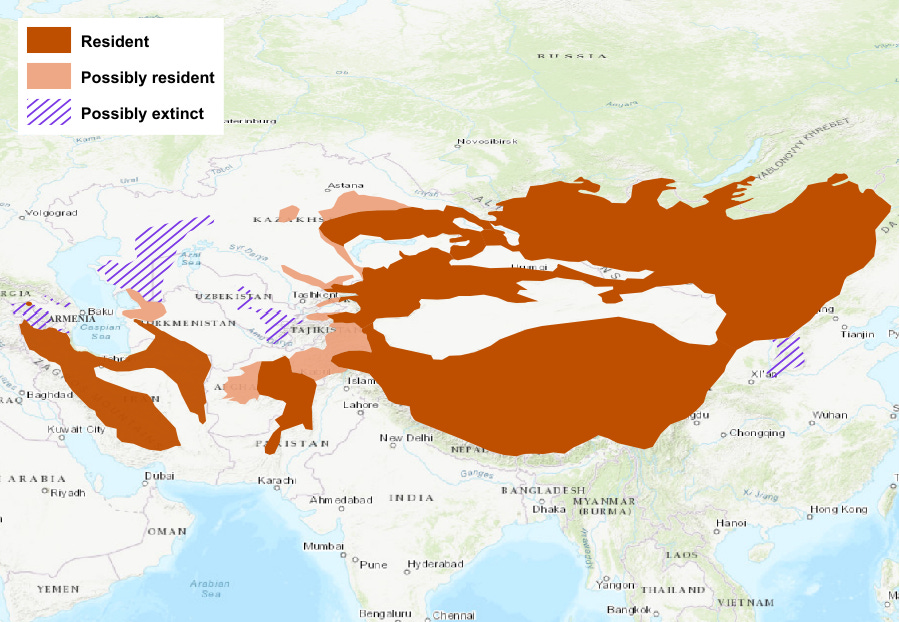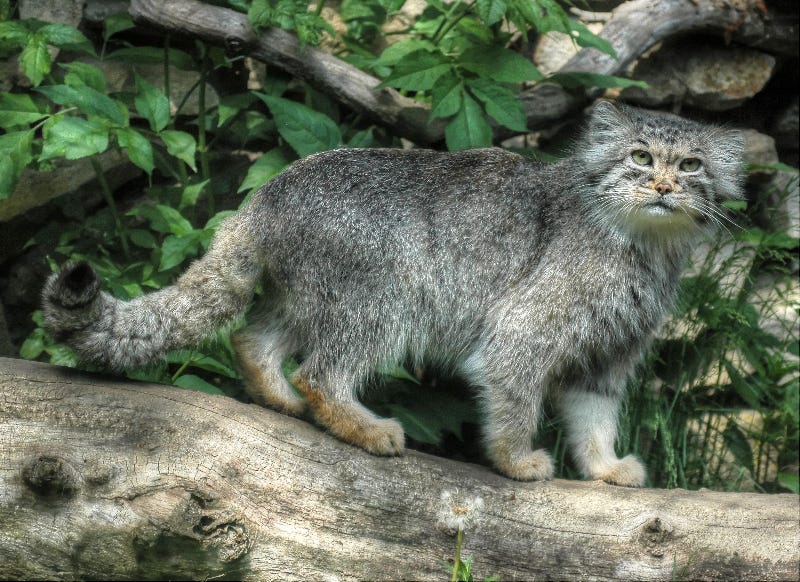A city named for a hill named for a palace named for a-
Some notes on the global over-supply of Richmonds. Also, as a bonus: my all-time favourite type of cat.
Some things I wrote last May.
Recovering British Prime Minister Rishi Sunak is MP for Richmond. If you’re British, or a fan of “well, it was good, once” Premier League sitcom Ted Lasso, the place that name is most likely to bring to mind is a plush riverside suburb eight miles south west of central London. The town of Richmond (not Richmond-upon-Thames: that’s the borough) was once in Surrey, and offers all sorts of sights, not least London’s biggest park and some very fine stretches of riverside, which make it one of the best bits of the capital to visit on a sunny afternoon.
That, however, is not the place which Rishi Sunak is MP for. The former Prime Minister instead represents the small market town of Richmond, North Yorkshire. The Surrey one is a fair bit bigger than the Yorkshire one (it contains a sizeable chunk of its borough’s population of around 200,000, compared to just 8,500 for the market town). Nonetheless, it lies not in the constituency of Richmond, but in Richmond Park, named for its most prominent feature.
So why does the tiny Yorkshire one get the name? Short answer, because it came first. Longer answer, with many, many other Richmonds in it, to follow.
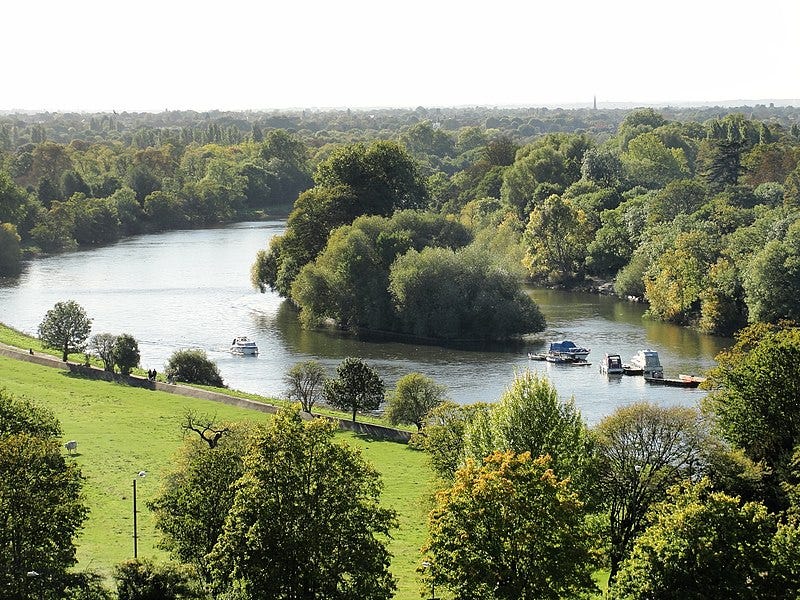
In 1485, Richard III – last of the house of York – lost the Battle of Bosworth Field and thus the Wars of the Roses, and ended up under a car park in Leicester. (I’m not gonna go into that here, but honestly it’s a top story, you should check it out.) The guy who led the opposing forces – the usurper who inherited the crown – was Henry Tudor, who promptly put on a shiny hat and started calling himself King Henry VII.
Before he was named that, however, his title had been Earl of Richmond1, a peerage named for the Yorkshire market town. Henry clearly retained some affection for that title, because around 1500, when he ordered the construction of a country residence on the site of the recently burned down Shene Palace on a bend in the Thames south west of London, he decided to name it Richmond Palace. In the years that followed – or possibly at around the same time, on even the order of the king; it’s not entirely clear – the name of the neighbouring town of Shene/Sheen gradually switched to Richmond. This is why, if you’ve ever wondered, that area has districts called North Sheen and East Sheen, but no actual Sheen. The actual Sheen is Richmond.
So, that explains the relationship between the two most important British Richmonds (there are other, less prominent ones). If you’re an American with limited interest in disappointing football-based sitcoms, though – if military history is more your bag – then it’s unlikely that either is the first place the name “Richmond” brings to mind.
Richmond, Virginia, is the capital of that state, and its urban area contains perhaps a million people. That almost certainly makes it the world’s biggest Richmond. It’s also arguably the most historically important – or at least, infamous – because it was also capital of the breakaway Confederacy during the American Civil War which lasted from 1861 until 1865.
How did that end up as yet another Richmond? Because it was founded by a planter named William Byrd, who thought the view of the bend in the James River from a nearby hill looked just like the one of the Thames from Richmond Hill. (Well, I say he was a planter: he was a mere landowner. It was the black people he kept as slaves, the mistreatment of whom Byrd lovingly recorded in his diary, who presumably did all the actual planting.)
A few years before the people of Richmond, Virginia went to war to defend their right to treat other human beings as property, one of their number had crossed the continent and moved to the newly established city of San Francisco. Edmund Randolph clearly missed his hometown, though – because, having risen to become a state legislator, he persuaded some federal surveyors to name a random bit of coast “Richmond” in its honour.
And so Richmond, California was named after Richmond, Virginia. Which was named after – well, you get the point.
We can extend this chain at the other end, too. Richmond, Yorkshire was founded in 1071 by a Breton warlord named Alan Rufus, on land granted to him by William the Conqueror following a series of military campaigns known by the unpromising title of the “Harrying of the North”. Rufus already held property in Normandy, which included the village of Richemont – nice/strong hill. And so, when he built a castle on another nice/strong hill in England, so as to better facilitate his subjugation of the locals, he named it accordingly, becoming the 1st Lord of Richmond in the process. (It didn’t become an earldom until 1136.)
So, if you’re keeping track: Richmond is a Californian city named for a Virginian city named for a Surrey town named for a palace named for a peerage named for a Yorkshire town named for a castle named for a Normandy village named for a particularly nice hill.
Hope that clears everything up.
That’s as far as I’m going here, but it may be possible to extend the chain even further. In 2013, Barclay Simpson – a native of Richmond, Yorkshire, which he claims to be the best one (“We have everything!”) – produced a book named Richmonds of the World, covering no fewer than 55 different Richmonds. At the time, he told the Northern Echo that Richmond was the UK’s most duplicated place name, beating London (46), Oxford (41), Manchester (35), Bristol (31) and Newcastle (a frankly poor 29).
Even then, though, Simpson seemed uncertain of the exact number of Richmonds – the article isn’t sure if there are 55, 56 or 57 Richmonds – and within a couple of years he was telling Richmond News, of Richmond, British Columbia, in the suburbs of Vancouver, that there were more than 90.
Many of these will be named after those I’ve already listed. Others will have been founded by one of the many Dukes of Richmond (Henry VII’s son Henry VIII upgraded the title when he gave it to his bastard2 son Henry Fitzroy, presumably for sentimental reasons). These spent much of the 18th and 19th centuries pottering around the world doing all sorts of delightful things on behalf of the British Empire, naming places after themselves all the while. Someone could probably produce a family tree of all those Richmonds, showing how Schloss Richmond, in Brunswick, Germany, related to Richmond, KwaZulu-Natal or Richmond, New South Wales.
But it won’t, on this occasion at least, be me. Sorry.
Although if you can’t afford it right now and still want to read, just hit reply and ask for a comp. You can have one. Really. I’m writing it anyway, so.
Anyway, here’s something about a different matter entirely:
Animal of the week: Pallas’s Cat
Normally, regular readers will recall, this slot is primarily concerned with maps. But the election campaign in which I wrote all this brought forth rather a lot of maps, and also rather a lot of need for distraction from such things, so I decided to switch things up by telling everyone about another of my favourite animals.
The Pallas’s Cat – named for Peter Simon Pallas, the Prussian zoologist who provided the first scientific description back in 1776, even though he lived nowhere near one – is found in a huge swatch of central Asian, from the Caucasus to eastern China. It hides in crevices and borrows, preys on rabbits and rodents, is well adapted to both camouflage itself and stay warm in a freezing climate, and the reason that it’s my favourite is that it looks like this:
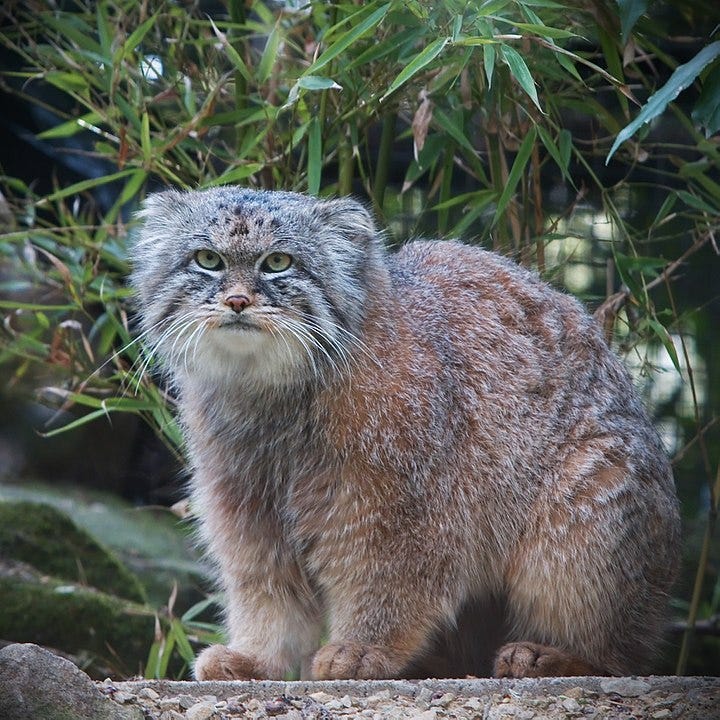
There are a number of other striking facts about the manul, as they’re also known. They use that fluff not just to keep themselves warm, but to make themselves look bigger (they’re actually about the size of, well, a cat). They’re the only cats whose pupils are circular, rather than slit-shaped. They’re uniform grey in winter and more tabby in summer, and have an absurdly short mating season – females are fertile for somewhere between one and two days, which feels a bit high risk from a continuation-of-the-species point of view. They’re also terrible runners, so stalk prey instead by hiding and ambushing them. (More from Wired here.)
But the main reason I wanted to tell you about them is because they look like this:
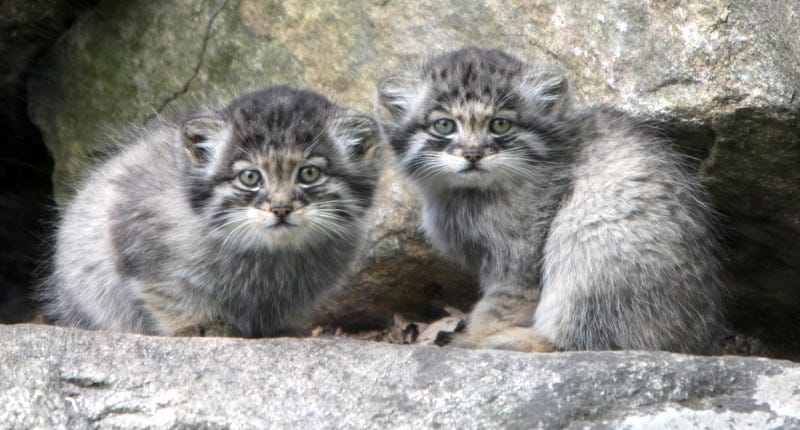
Here’s a video which claims to be the noises they make. It sounds like a combination of snoring, wheezing and Gollum – but it nonetheless did not go down well with Henry Scampi.
Oh – and just to remind you, they look like this.
Technically 2nd Earl of Richmond (7th creation).
Different sort of bastard.



